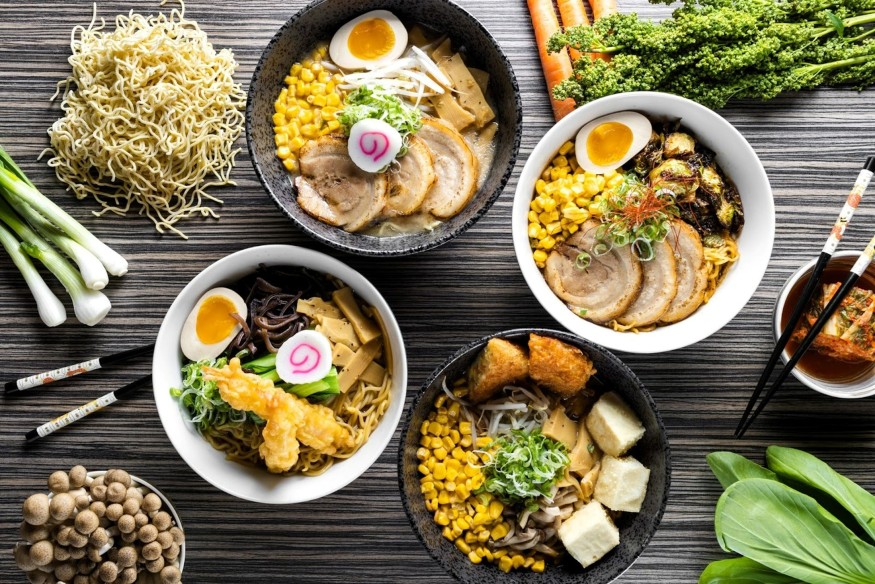Ramen is more than just a bowl of noodles—it's a deeply rooted part of Japanese culinary identity, shaped by history, geography, and craftsmanship. From its humble beginnings as a Chinese import to becoming a beloved national staple, ramen has evolved into countless regional variations, each reflecting local tastes and traditions.
Whether it's the miso-rich bowls of Sapporo or the creamy tonkotsu of Hakata, Table to Stix Ramen knows that every style tells a story of place and people.
Understanding ramen is not just about ingredients—it's about the culture that surrounds it, the rituals of preparation, and the quiet artistry behind each steaming serving.
How Ramen Became a Japanese Staple
Ramen began as a Chinese-style noodle dish brought to Japan in the late 19th or early 20th century, often served in small eateries catering to laborers and travelers. Over time, it was adapted using local ingredients and techniques, gradually becoming a distinct part of Japanese culinary culture.
As ramen grew in popularity, different regions began developing their own styles based on available ingredients and taste preferences. Sapporo became known for its hearty miso-based broth suited to Hokkaido's cold climate, while Hakata developed a rich pork-bone tonkotsu broth favored in southern Japan. These variations helped ramen become more than just a meal—it became a reflection of place. Regional pride often drives innovation, with chefs competing to perfect the local style while preserving its roots.
Today, ramen is deeply woven into Japanese food culture.
Core Elements That Define Traditional Ramen
At the heart of traditional ramen are three essential components: noodles, broth, and toppings. Each one must work in harmony to create a balanced and satisfying bowl. Noodles vary in thickness, firmness, and shape, tailored to complement the broth they accompany. Some are curly and yellow with a springy bite, while others are straight and thin, absorbing flavor more quickly. Even the flour used can affect the texture and mouthfeel.
The broth is often considered the soul of ramen. Shoyu offers a clear, soy-based depth, miso brings a bold umami richness, shio has a delicate saltiness, and tonkotsu delivers a creamy, pork-based intensity. Each style requires hours—sometimes days—of simmering to achieve the desired complexity. Toppings like chashu pork, soft-boiled eggs, bamboo shoots, and green onions are carefully chosen not just for taste but also for texture and color. Some chefs even infuse oils or char elements to add subtle layers of aroma and taste.
Craftsmanship Behind the Bowl
Making traditional ramen is a labor of dedication and skill. The broth must be simmered slowly, often using bones and aromatics that release deep flavors over time. Chefs guard their recipes closely, refining them over years of trial, error, and refinement.
Noodles aren't simply mass-produced; many ramen shops craft their own from scratch, adjusting their recipe to suit the broth's weight and intensity. The texture of the noodle matters just as much as its taste, with some chefs even modifying the mineral content of the water to perfect the bite. In some regions, alkaline-rich water is used to give the noodles that characteristic chew and yellow hue.
Exploring Regional Flavors
Japan's geography and seasonal diversity have shaped the ramen landscape into a mosaic of regional identities. In Sapporo, the cold winters inspired a miso-based broth, often thick and buttery, paired with vegetables like corn and bean sprouts to create a warming, robust meal. Down south in Hakata, the milky tonkotsu broth is prized for its depth, cooked for hours using pork bones until it reaches a creamy, almost silky texture. The noodles there are usually thin and firm, allowing for quick preparation and fast service.
Other cities contribute their own interpretations—Tokyo favors a soy-based shoyu ramen with medium-thin noodles and a clean, savory finish, while Kitakata's version leans on wide, flat noodles swimming in a light, pork-and-soy broth. These local variations are more than just stylistic—they're shaped by regional produce, climate, and even the pace of daily life. What one city sees as comfort food, another might treat as a quick-standing lunch for busy commuters. In this way, ramen becomes both a cultural constant and a regional signature.
Ramen Shops and Everyday Dining Culture
Ramen is deeply embedded in everyday life across Japan, often enjoyed during lunch breaks, after-work meals, or late-night cravings. Ramen-ya, or ramen shops, range from tiny counter-style spaces tucked into alleyways to bustling chains with vending machines for ordering. Despite their differences, most offer a straightforward, no-frills dining experience centered around speed, quality, and flavor.
Inside, the atmosphere tends to be quiet but focused, with chefs preparing bowls just feet away from seated customers. It's not unusual to hear the sound of slurping—it's considered a compliment to the chef and a way to enjoy the noodles at their best texture. There's an unspoken rhythm to it all: order, eat, leave. This efficiency allows ramen to remain accessible and affordable, yet always rooted in skill and tradition. Late-night eaters, students, and office workers alike find comfort in the predictability and warmth of a good bowl.
Tradition vs. Modern Trends
While traditional ramen has maintained its core identity, modern twists have emerged around the world. Chefs experiment with everything from vegan broths to truffle oil, adapting ramen to fit new palates and dietary preferences. These creative takes can be found not only in Japan but in cities across Europe, North America, and beyond. Some even turn ramen into fusion dishes, blending it with other global cuisines.
Despite the rise of novelty bowls and instant noodle innovations, there's still a strong reverence for the original. Many ramen enthusiasts seek out small shops known for preserving old-school methods—handmade noodles, 12-hour broths, and a devotion to flavor without shortcuts. This balance between innovation and tradition keeps ramen evolving without losing the soul that made it beloved in the first place. The tension between new and old adds layers of meaning to each bowl, making ramen both a comfort and a canvas for reinvention.





